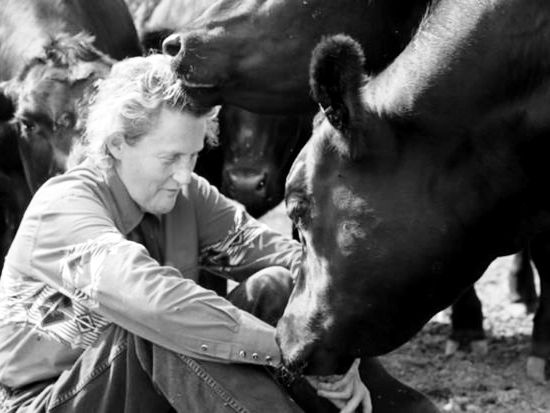Temple Grandin

Temple Grandin standing confidently in front of a barn, wearing her signature western shirt and bolo tie.
Biography
Temple Grandin was born in 1947 and diagnosed with autism at a time when most doctors advised institutionalization. Her mother refused. Instead, she gave Temple access to speech therapy, structure, and a chance to pursue her passions. That early intervention set her on a path to change two worlds—animal science and autism awareness.
As a visual thinker, Grandin saw patterns and problems others missed. While spending time at her aunt’s ranch, she noticed how small environmental details—like shadows or sharp turns—stressed livestock. She began designing systems that reduced fear and pain for animals, transforming how cattle are handled in slaughterhouses across North America.
She earned a Ph.D. in Animal Science and became a professor at Colorado State University. Her designs and animal welfare audits are used by companies like McDonald’s and Tyson Foods. Over half of the cattle processed in the U.S. today pass through equipment she designed.
Outside of agriculture, Grandin became one of the world’s most prominent voices for people with autism. She wrote bestselling books like Thinking in Pictures and The Autistic Brain, helping the world understand that neurological differences can be strengths—not deficits. She also invented the 'squeeze machine,' a device that helps people with sensory sensitivities regulate stress.
Through her lectures, writing, and life story—portrayed in an Emmy-winning HBO film—Temple Grandin has become a symbol of what’s possible when we reimagine inclusion. She continues to speak globally about autism, education, innovation, and empathy.
Temple Grandin didn’t just speak up—she redesigned the system. Her work improved the lives of millions of animals and opened society’s eyes to the value of neurodivergent minds. She proved that seeing the world differently isn’t a flaw—it’s often the blueprint for progress. Her story reminds us that true innovation begins when we stop trying to make everyone fit a mold and instead ask: what if we designed with everyone in mind?
?
How did Temple Grandin’s autism help her design better systems for animals?
What role did her mother play in supporting Temple’s growth and success?
Why is visual thinking important in fields like engineering or design?
What can we learn from Temple Grandin about accommodating neurodiversity in schools and workplaces?
How did Temple Grandin’s early experiences at her aunt’s ranch shape her career?
Dig Deeper
Temple Grandin explains how her unique perspective as a person with autism helped her solve problems others couldn’t see.
An accessible, heartfelt video exploring how Grandin’s life reshaped two industries and helped redefine neurodiversity.
Discover more

Steve Jobs
Steve Jobs, the visionary co-founder of Apple Inc. who revolutionized personal computing, mobile communication, music, and digital design.

Benjamin Franklin
Printer, publisher, scientist, inventor, diplomat, and philosopher, Benjamin Franklin shaped nearly every aspect of early American life.

Helen Keller
Helen Keller overcame the isolation of being both deaf and blind to become a world-renowned author, speaker, and advocate for disability rights, women’s suffrage, labor rights, and social justice.
Further Reading
Stay curious!
